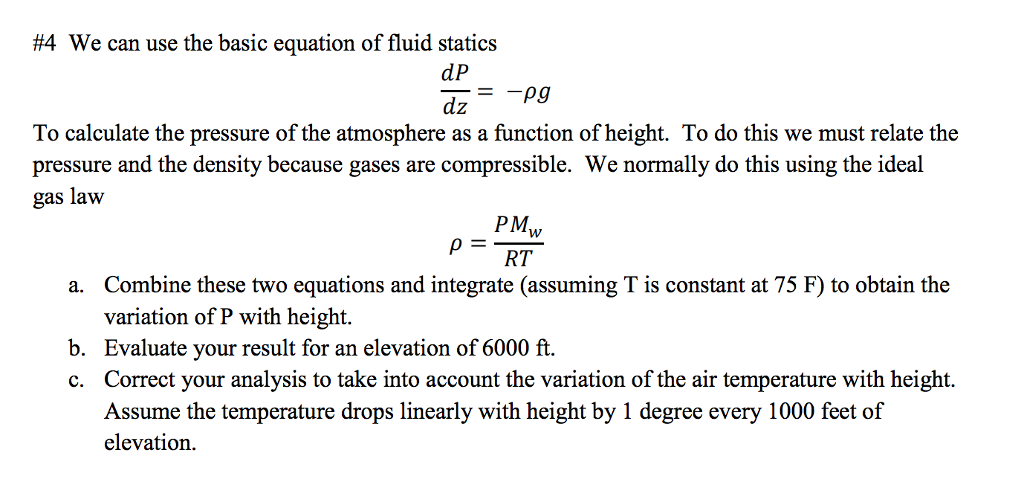

Your altimeter may change to show greater or less than 5,000' now. Likewise, when you are in cruise and get handed off to another controller who gives you a new altimeter setting, you will dial that in. You will dial that in to your altimeter and the altitude will change (very slightly), but you will still climb to 5,000' as read on your altimeter. The pressure altitude can be determined by any of the three following methods: By setting the barometric scale of the altimeter to 29.92 Hg and reading the indicated. If you fly a slow airplane and are on with ATC, you may get handed off to another controller who may give you a new altimeter setting. If the altimeter is set for 29.92 Hg SDP, the altitude indicated is the pressure altitudethe altitude in the standard atmosphere corresponding to the sensed pressure. using the hydrostatic equation, perfect gas law and the temperature lapse rate equation. Then you will depart and begin to climb to your cruise altitude. measurement of the pressure is called pressure altitude (PA).

Your altimeter will now read the correct elevation. Before you depart, you will set your altimeter based on the ATIS/AWOS/ASOS. You don't have do do anything to figure out your cruising altitude.

This equation can be arranged to also calculate the air pressure at a given altitude as shown in Equation 2.
#Pressure altitude formula download#
Use a chart (probably in your POH, but you can download them from The Interwebs) or use an app. The altitude at a given air pressure can be calculated using Equation 1 for an altitude up to 11 km (36,090 feet). Example: Suppose the current altimeter reading is 20, calculate the pressure altitude if the field elevation is 500 feet. That is pressure altitude corrected for standard temp. Pressure altitude is an important value for calculating performance as it more accurately represents the air content at a particular level. Just put the altimeter setting in the Kollsman window and that is your altitude above sea level that you will use.įor planning takeoff roll and landing distance, you will use density altitude. Formula: Pressure Altitude (29.92 - current baro) 1000 + Current field elevation Example: Current baro: 29.82 Field elevation: 500 Calculate: 29.92. It's pretty simple in that regard and requires zero thought. The result form the sensor (on of the popular Bosh sensors) is a pressure - we convert it to altitude using International Standard Atmosphere model (formula is different than the one presented here). Adjust your altitude to so the altimeter reads 5,500'. The formula that you provided will give the different results to the one in the cited eurocontrol document. Your altimeter may change to show greater or less than 5,500' now. You will dial that in to your altimeter and the altitude will change (very slightly), but you will still climb to 5,500' as read on your altimeter. If you fly a slow airplane and are on with ATC, you may get handed off to another controller who may give you a new altimeter setting. Then you will depart and begin to climb to your cruise altitude. The formula ( 29.92 Q N H) 1000 + h is just a very rough estimation, as Kolom already mentioned.

This equation can be arranged to also calculate the air pressure at a given altitude as shown in Equation 2.Click to expand.Simple answer - No. The altitude at a given air pressure can be calculated using Equation 1 for an altitude up to 11 km (36,090 feet). Using ISA standards, the defaults for pressure and temperature at sea level are 101,325 Pa and 288 K.ĭue to the fact that weather conditions affect pressure and altitude calculations, the pressure and temperature at sea level must be known. The hydrostatic equation, the geostrophic and gradient wind equations. The following table and graph illustrate the relationship between altitude and pressure using the default values for pressure and temperature at sea level. The terms pressure altitude (zp), altimeter correction (D) and specific. Relationship Between Altitude and Pressure Wondering what the air pressure is on Jupiter or Mars? Check out our Interplanetary Air Pressure at Altitude Calculator


 0 kommentar(er)
0 kommentar(er)
